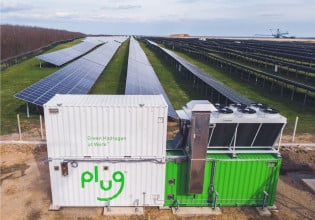Last week, we presented a series of 20 articles highlighting the most-important new product introductions and industry news developments; as determined by you, the readers of PowerPulse. This week, we follow-up with a series of four forward-looking articles generically titled "Darnell Defines the Next Decade." In addition to listening to our readers when determining the most important areas to include in our editorial coverage, PowerPulse uses our unique access to the insights available from the consultants and analysts at Darnell Group. Those insights help inform and guide our editors in identifying emerging trends, usually before they are identified other publications.
Power electronics does not happen in a vacuum. Trends in our industry are driven by a combination of technology and market developments in the general electronics industry as well as within power electronics. One way to identify future trends in power electronics is to identify a trend or growth area within our industry (for example the emergence of new device materials such as GaN, SiC, GaAs, etc) and add a complementary or countervailing growth area in another related non-power field (for example the emergence of 5G telephony). And you may be able to identify a discontinuity or tipping point for power electronics.
Over the rest of this week, PowerPulse will publish a series of articles from Darnell Group that will identify three areas where paradigm shifts are occurring; Devices, Dispersed Energy and Software-Defined Power. Each of these areas is moving toward a tipping point that will lead to new applications, new business models and new opportunities for value-added. The result will be to redefine the “value of energy†and it will create threats as well as opportunities.
The foundation has been laid: New materials such as GaN are entering their second decade. Digital power technology has entered its second decade. Renewable energy, energy storage and energy harvesting technologies are increasingly presented as alternatives to conventional generation technologies. So the “challenge†is to identify the complementary or countervailing trends outside of power electronics. That will be the goal of this series of articles.
Tomorrow, we will look at Devices, 3D Printing and Connectivity, and how trends in those areas will impact our work as power electronics engineers and technical managers. Clearly, silicon will continue to dominate power system designs for the near- and even medium-term future. But increasingly, growth will be in new materials such as SiC and GaN, enabling new solutions including power supply on chip (PSoC) and power supply in package (PSiP) approaches. The development of PSoC and PSiP will be complemented and enabled by the emergence of 3D printing technologies. Along a separate line of development will be the emergence of integrated wireless connectivity in power converters and even batteries.
Wednesday we will consider a combination of increasingly-efficient and cost-effective energy harvesting and renewable energy sources that will enable the wide-spread use of ambient energy sources across a wide range of applications ranging from milliWatts to MegaWatts. Local energy storage will play a key role in this evolution. The emergence of dispersed energy resources will provide energy when and where needed and will result in new paradigms for energy/power distribution architectures on all scales.
Digital power is well established and software-defined power architectures (SDPAs), which will be for focus of Thursday's article, will build on that foundation. Concepts based on software-defined networks (SDNs) are beginning to emerge and be refined. SDPAs will result from a merging of developments related to SDNs and today’s digital power technologies. With improved sensing and measurement technologies, more operational data is becoming available in real time. At the same time, more processing power (for lower monetary cost and lower energy cost) is increasing the sophistication and complexity of monitoring and control software.
Those trends will enable the development of software-defined power: real time and simultaneous optimization of power distribution, power conversion, energy storage and power consumption on both a global and granular basis. SDPAs are a multi-faceted, generic concept that will have broad and varied implications. This concept is independent of scale. Thursday we will consider the implications of SDPAs on 5G telephony and high-performance computing. Finally on Friday, we will dive into the implications of SDPAs for advanced microgrids and the smart grid.
The agenda for the rest of this week has been set and will include: Tuesday, “Devices, 3D Printing and Connectivity.†Wednesday, “Gathering Energy to Replace Generating Energy.†Thursday, “Software-Defined Power Impacts Electronic Systems.†Friday, “Software-Defined Power and Dispersed Energy Sources.†Of course, these will not be the only important trends in power electronics for the next decade. Keep reading PowerPulse, published by Darnell Group, and you will keep abreast of all the newest trends in our industry as they emerge.






